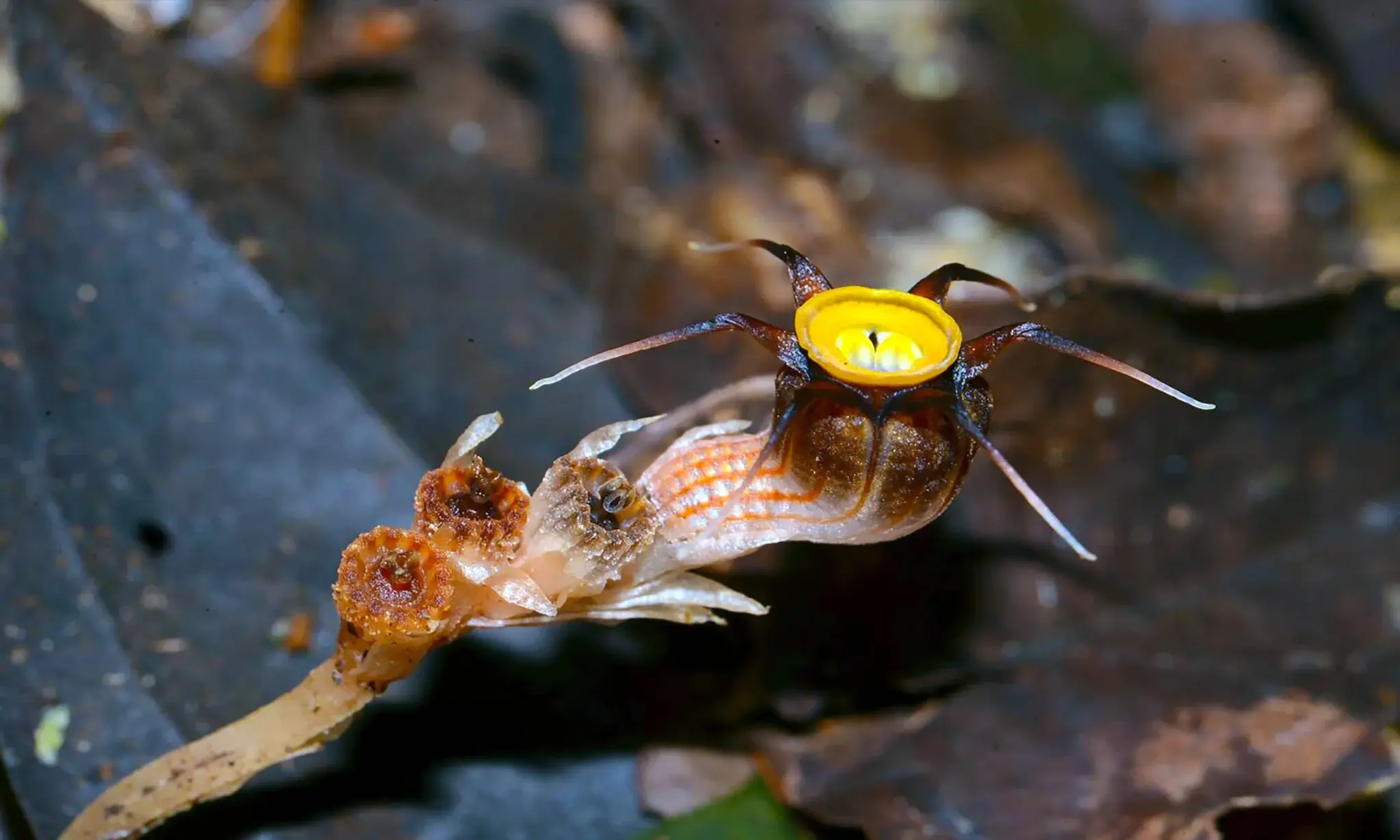About Thismia malayana:
- It is a new species of plant discovered in the tropical rainforests of Peninsular Malaysia.
- It belongs to a group of plants known as mycoheterotrophs.
- Unlike most plants, mycoheterotrophs do not perform photosynthesis.
- Instead, they act as parasites, stealing carbon resources from the fungi on their roots.
- This adaptation takes advantage of the mycorrhizal symbiosis, which is usually a mutually beneficial relationship between colonizing fungi and a plant’s root system.
- What happens in mycorrhizal symbiosis?
- The fungi help the tree absorb water and nutrients from the soil, while the tree provides the fungi with sugars produced through photosynthesis.
- This symbiotic partnership is vital for the health and growth of both organisms.
- But Thismia malayana, instead of contributing to the exchange, acts as a parasite,siphoning off carbon resources from the fungi without offering anything in return.
- By stealing nutrients from fungi, this newly discovered species thrives in the low-light conditionsof dense forestunderstories, where its highly specialised flowers are pollinated by fungus gnats and other small insects.
- The unusual plant is around 2 cm long and is typically found hidden in leaf litter and growing near tree roots or old rotten logs.
Despite its small size, Thismia malayana is very sensitive to environmental changes and has been classified as Vulnerable according to the IUCN Red List.
Q1: What are Fungi?
Fungi, along with Animalia (animals), Plantae (plants), Protista, Archaea/Archaebacteria, and Bacteria or Eubacteria form the six ‘kingdoms’ of biology. They are eukaryotic organisms; i.e., their cells contain membrane-bound organelles and clearly defined nuclei. Fungi usually reproduce both sexually and asexually. They help in breaking down dead organic material, they continue the cycle of nutrients through ecosystems. Fungi, as food, play a role in human nutrition in the form of mushrooms. They also act as agents of fermentation in the production of bread, cheeses, alcoholic beverages, and numerous other food preparations.
Source: Remarkable new plant species steals nutrients from underground fungi
Last updated on December, 2025
→ Check out the latest UPSC Syllabus 2026 here.
→ Join Vajiram & Ravi’s Interview Guidance Programme for expert help to crack your final UPSC stage.
→ UPSC Mains Result 2025 is now out.
→ UPSC Notification 2026 is scheduled to be released on January 14, 2026.
→ UPSC Calendar 2026 is released on 15th May, 2025.
→ The UPSC Vacancy 2025 were released 1129, out of which 979 were for UPSC CSE and remaining 150 are for UPSC IFoS.
→ UPSC Prelims 2026 will be conducted on 24th May, 2026 & UPSC Mains 2026 will be conducted on 21st August 2026.
→ The UPSC Selection Process is of 3 stages-Prelims, Mains and Interview.
→ UPSC Result 2024 is released with latest UPSC Marksheet 2024. Check Now!
→ UPSC Prelims Result 2025 is out now for the CSE held on 25 May 2025.
→ UPSC Toppers List 2024 is released now. Shakti Dubey is UPSC AIR 1 2024 Topper.
→ UPSC Prelims Question Paper 2025 and Unofficial Prelims Answer Key 2025 are available now.
→ UPSC Mains Question Paper 2025 is out for Essay, GS 1, 2, 3 & GS 4.
→ UPSC Mains Indian Language Question Paper 2025 is now out.
→ UPSC Mains Optional Question Paper 2025 is now out.
→ Also check Best IAS Coaching in Delhi

















